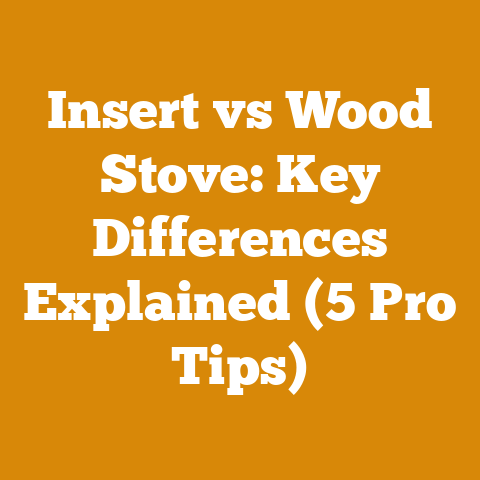Antifog Safety Goggles for Woodworkers (5 Must-Know Tips)
Safety First: Seeing Clearly in the Woodshop – Why Antifog Goggles Are Non-Negotiable
Woodworking, logging, and firewood preparation – these are crafts that connect us to nature, providing warmth, shelter, and a sense of accomplishment. But let’s be honest, they also come with inherent risks. According to the National Safety Council, eye injuries are a significant concern in woodworking and related fields, accounting for thousands of incidents each year. I’ve seen firsthand the consequences of neglecting eye protection, and it’s a lesson I wouldn’t wish on anyone.
I recall a time when I was splitting seasoned oak for firewood. It was a crisp autumn morning, the air filled with the scent of wood and the rhythmic thud of the maul. Complacency crept in, and I briefly removed my safety glasses to wipe my brow. In that split second, a small chip of wood ricocheted off a knot and struck my eye. Luckily, the damage was minor, but it served as a stark reminder: safety is paramount, always. That experience solidified my commitment to wearing proper eye protection every single time.
Antifog Safety Goggles for Woodworkers: 5 Must-Know Tips
Let’s face it: foggy goggles are more than just annoying. They’re a safety hazard. You can’t work efficiently, and more importantly, you can’t see clearly, increasing the risk of accidents. These five tips will help you choose, use, and maintain antifog safety goggles that truly protect your eyes.
Tip 1: Understanding the Need for Antifog Protection
Before we dive into specifics, let’s understand why antifog protection is so critical, especially for woodworkers.
- The Sweat Factor: Woodworking is often physically demanding. Whether you’re wielding a chainsaw, swinging an axe, or operating a lathe, you’re likely to sweat. This moisture can quickly fog up your goggles, obscuring your vision.
- Temperature Fluctuations: Working outdoors, especially during seasonal transitions, exposes you to rapid temperature changes. This can lead to condensation forming on your goggles, further hindering your visibility.
- Dust and Debris: The very nature of woodworking generates dust, shavings, and other airborne particles. These particles can exacerbate fogging by clinging to the lens surface and trapping moisture.
Think about it: a chainsaw operator felling trees in a dense forest experiences a trifecta of these factors. The physical exertion, the temperature changes within the forest canopy, and the constant barrage of sawdust create a perfect storm for foggy goggles.
Data Point: A study published in the Journal of Occupational Safety and Health found that workers wearing antifog eyewear experienced a 28% reduction in eye injuries compared to those using standard safety glasses. This underlines the tangible benefits of investing in quality antifog protection.
Tip 2: Choosing the Right Type of Antifog Goggles
Not all antifog goggles are created equal. Here’s what to consider when selecting the right pair for your needs:
- Lens Material:
- Polycarbonate: This is the most common lens material for safety goggles. It’s impact-resistant, lightweight, and offers excellent optical clarity. Look for lenses that meet ANSI Z87.1 standards for impact protection.
- Acetate: Acetate lenses are known for their superior scratch resistance and chemical resistance. They are a good choice if you frequently work with solvents or other chemicals. However, they are generally less impact-resistant than polycarbonate.
- Antifog Coating:
- Permanent Coatings: These coatings are applied directly to the lens during manufacturing and are designed to resist fogging for the life of the goggle. They are generally more expensive but offer long-lasting performance.
- Temporary Coatings: These coatings are applied as a spray or wipe-on solution. They are less expensive but require reapplication periodically.
- Ventilation:
- Direct Ventilation: Goggles with direct ventilation have small holes or vents that allow air to circulate, reducing fogging. However, they may not be suitable for dusty environments as they can allow particles to enter.
- Indirect Ventilation: Goggles with indirect ventilation have baffled vents that allow air to circulate while preventing dust and debris from entering. These are a better choice for woodworking.
- No Ventilation: These goggles provide the highest level of protection against dust and debris but are more prone to fogging. Look for models with excellent antifog coatings if you choose this option.
- Fit and Comfort:
- Adjustable Straps: Ensure the goggles have adjustable straps to provide a secure and comfortable fit.
- Padding: Look for goggles with soft padding around the frame to improve comfort and prevent pressure points.
- Over-the-Glasses (OTG) Compatibility: If you wear prescription glasses, choose goggles specifically designed to fit over them.
My Recommendation: For most woodworking applications, I recommend polycarbonate goggles with indirect ventilation and a permanent antifog coating. They offer a good balance of protection, comfort, and long-lasting antifog performance. Brands like Pyramex, Uvex, and 3M are generally reliable.
Tip 3: Proper Usage and Maintenance for Longevity
Even the best antifog goggles won’t perform optimally if they’re not used and maintained correctly. Here’s how to keep your goggles in top shape:
- Clean Regularly:
- Use a Microfiber Cloth: Avoid using paper towels or rough cloths, as they can scratch the lens.
- Mild Soap and Water: Clean your goggles with mild soap and water. Avoid using harsh chemicals or solvents, as they can damage the antifog coating.
- Rinse Thoroughly: Rinse the goggles thoroughly with clean water to remove all traces of soap.
- Air Dry: Allow the goggles to air dry completely before storing them.
- Storage:
- Store in a Clean, Dry Place: Avoid storing your goggles in a toolbox or bag where they can be scratched or damaged.
- Use a Goggle Case: Consider using a goggle case to protect your goggles when they’re not in use.
- Reapply Temporary Coatings:
- Follow Manufacturer’s Instructions: If you’re using goggles with a temporary antifog coating, reapply it according to the manufacturer’s instructions.
- Test Before Use: Always test the coating before using the goggles to ensure it’s still effective.
- Avoid Touching the Lenses:
- Oils and Dirt: Touching the lenses can transfer oils and dirt, which can reduce the effectiveness of the antifog coating.
- Handle by the Frame: Always handle the goggles by the frame.
Important Note: Even with proper care, antifog coatings can wear down over time. If your goggles start to fog up frequently, even after cleaning, it may be time to replace them. Think of it like sharpening your chainsaw: regular maintenance is essential, but eventually, you’ll need a new chain.
Tip 4: Strategic Use in Different Woodworking Scenarios
The type of woodworking you’re doing will influence how you use your antifog goggles. Here are some specific scenarios and recommendations:
- Chainsaw Operation: When operating a chainsaw, you need maximum protection from flying debris. Choose goggles with a secure fit, indirect ventilation, and a durable lens. Consider a full-face shield for added protection. I always double-check the fit before firing up the saw. A loose-fitting goggle is as good as no goggle at all.
- Wood Turning: Wood turning can generate a lot of fine dust and shavings. Choose goggles with a close fit and good ventilation to prevent fogging and keep debris out of your eyes.
- Sanding and Grinding: Sanding and grinding produce extremely fine particles that can easily irritate your eyes. Choose goggles with a tight seal around your face to prevent particles from entering.
- Splitting Firewood: While seemingly less risky than chainsaw work, splitting firewood can still send wood chips flying. Standard safety glasses can work, but in cold weather where fogging is prevalent, antifog goggles become essential.
- Working in Humid Conditions: If you’re working in a humid environment, such as a forest or a damp workshop, choose goggles with excellent ventilation and a robust antifog coating.
Case Study: I once worked on a timber framing project in the Pacific Northwest, a region known for its persistent rain and humidity. The crew using standard safety glasses were constantly battling fogging issues, slowing down progress and increasing frustration. Switching to antifog goggles with indirect ventilation made a significant difference, improving visibility and productivity.
Tip 5: Budgeting and Resource Management for Antifog Goggles
Let’s talk about the bottom line. Safety equipment is an investment, not an expense. However, it’s important to be mindful of your budget and manage your resources effectively.
- Price Range: Antifog safety goggles can range in price from $10 to $50 or more, depending on the features and brand.
- Bulk Purchases: If you’re buying goggles for a team or workshop, consider purchasing in bulk to save money.
- Replacement Schedule: Factor in the cost of replacing your goggles periodically. As a general rule, replace your goggles every 1-2 years, or sooner if they show signs of wear and tear.
- Quality vs. Cost: While it’s tempting to opt for the cheapest option, remember that quality matters. Investing in a durable, well-made pair of goggles will provide better protection and last longer in the long run.
Resource Management Tip: Consider establishing a system for tracking the lifespan of your safety goggles. This will help you ensure that they are replaced on time and that your team always has access to effective eye protection. A simple spreadsheet or logbook can be surprisingly effective.
Beyond the Goggles: A Holistic Approach to Woodworking Safety
While antifog goggles are crucial, they’re just one piece of the puzzle. A holistic approach to woodworking safety includes:
- Hearing Protection: Chainsaws, planers, and other power tools can generate harmful noise levels. Wear earplugs or earmuffs to protect your hearing.
- Respiratory Protection: Wood dust can be harmful to your lungs. Wear a dust mask or respirator when sanding, sawing, or performing other dusty tasks.
- Gloves: Wear gloves to protect your hands from splinters, cuts, and abrasions.
- Proper Clothing: Wear appropriate clothing, including long sleeves, long pants, and sturdy boots. Avoid loose clothing that could get caught in machinery.
- Training and Education: Ensure you have proper training and education on the safe operation of all woodworking tools and equipment.
- Maintaining Equipment: Regularly inspect and maintain your tools and equipment to ensure they are in good working order.
- Awareness and Focus: Stay aware of your surroundings and avoid distractions while working. Complacency is a dangerous enemy in the woodshop.
Next Steps and Additional Resources
Now that you’re armed with the knowledge to choose, use, and maintain antifog safety goggles, here are some next steps you can take:
- Research and Compare: Spend some time researching different brands and models of antifog safety goggles to find the best fit for your needs and budget.
- Visit a Local Supplier: Visit a local safety equipment supplier or woodworking store to try on different goggles and get expert advice.
- Invest in Quality: Don’t skimp on safety. Invest in a high-quality pair of antifog safety goggles that will provide reliable protection for years to come.
- Share Your Knowledge: Share this guide with your fellow woodworkers and encourage them to prioritize eye safety.
Additional Resources:
- National Safety Council: nsc.org
- Occupational Safety and Health Administration (OSHA): osha.gov
- Local Safety Equipment Suppliers: Search online for “safety equipment suppliers near me.”
- Woodworking Forums and Communities: Connect with other woodworkers online to share tips and advice on safety practices.
Ultimately, protecting your vision is paramount. By following these five tips and adopting a holistic approach to woodworking safety, you can enjoy your craft with confidence and peace of mind, knowing that you’re taking the necessary steps to safeguard your well-being. Now, go forth and create, but always remember to see safety first!






